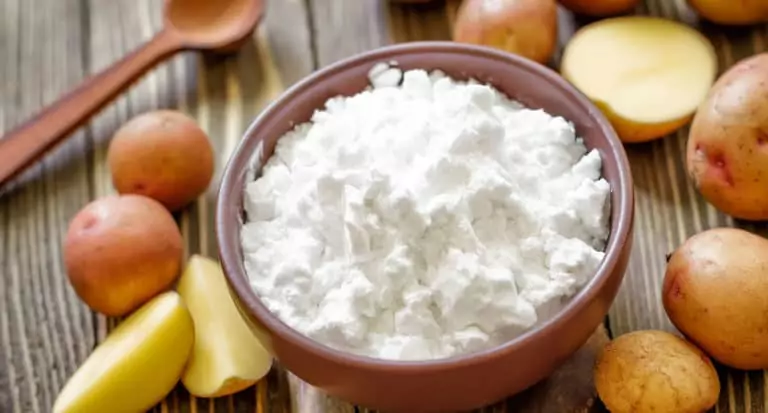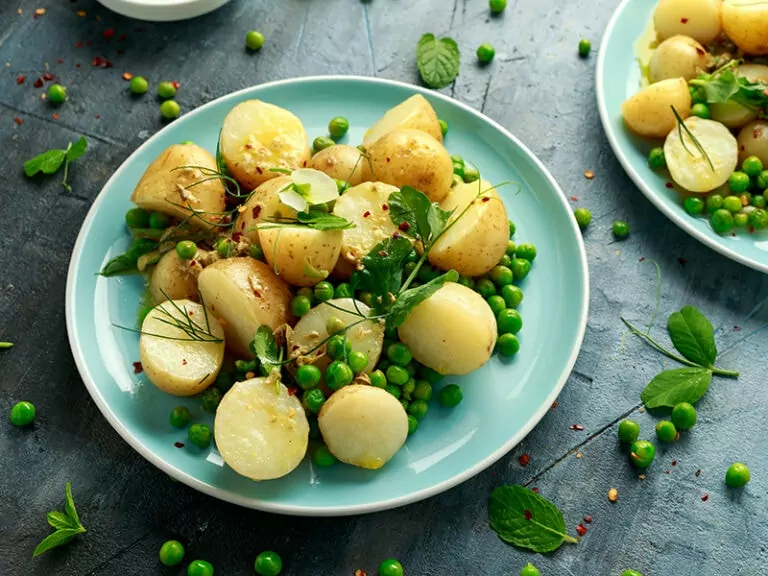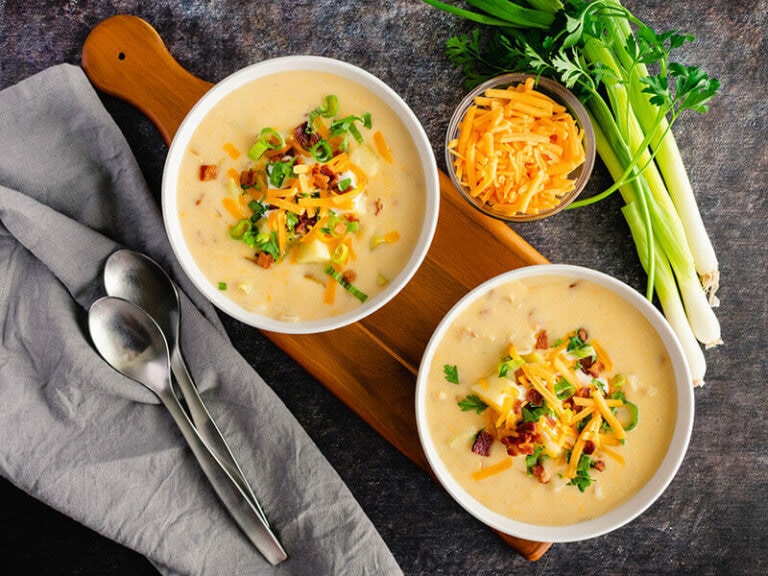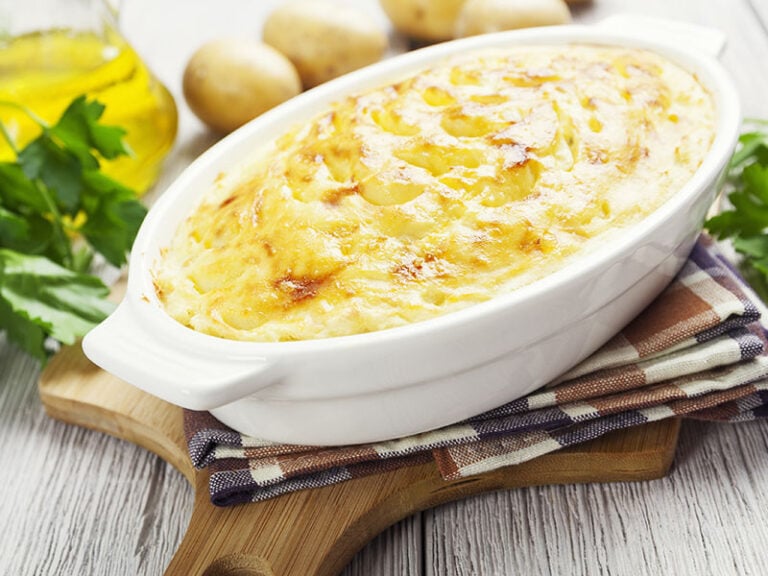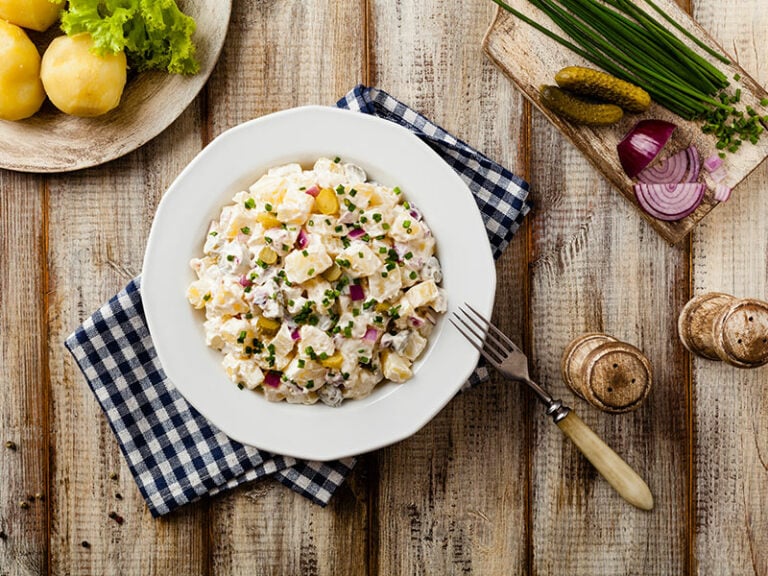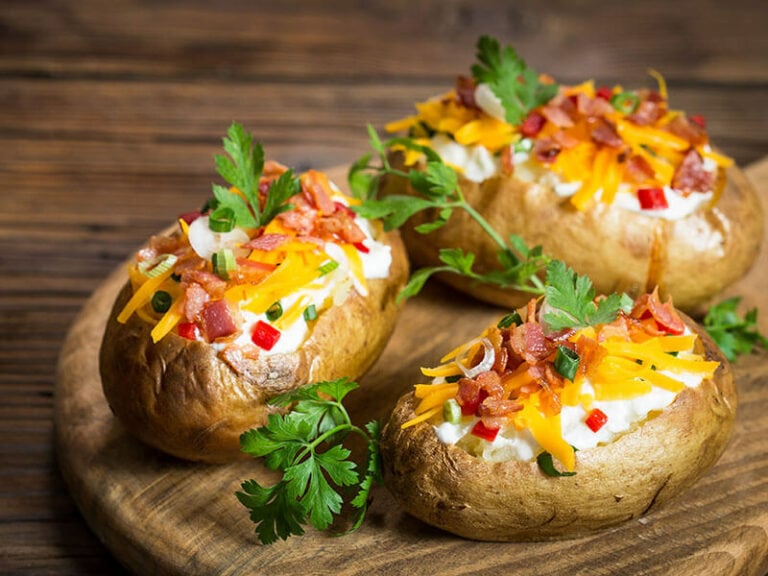For beginners, choosing the best potatoes for fries can be a difficult task. There are many types of potatoes out there, and not everyone is well-versed enough in potato-ology to tell the difference between them.
However, there are some principles you can use to determine which type of potato goes in which dish. Once you’ve been introduced to them, you’ll find navigating the world of potatoes much easier than before. Are you ready yet? Let’s not dawdle any further!
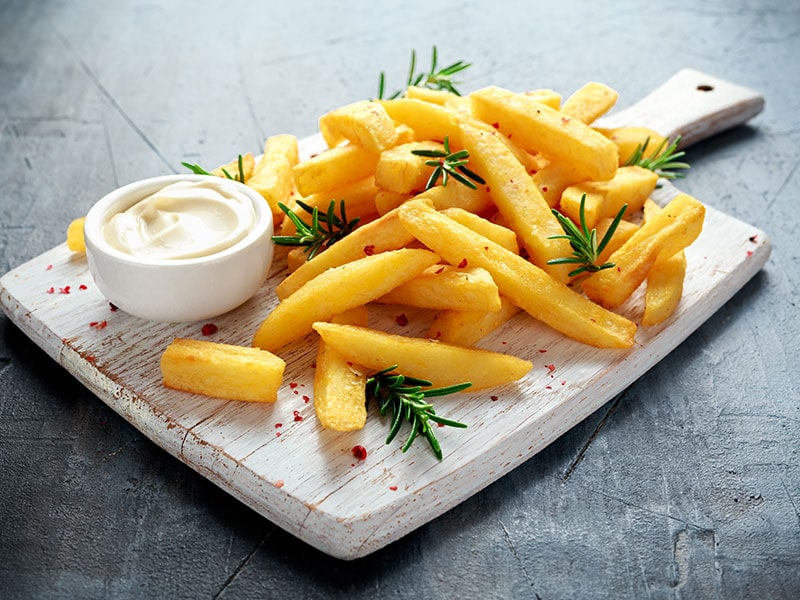
A Crash Course On French Fries
Before I talk about potatoes, you must know the basics about fries. After all, there are many factors involved in making fries, and you need to understand those factors to see what role potatoes play in the process.
Brief Introduction To French Fries
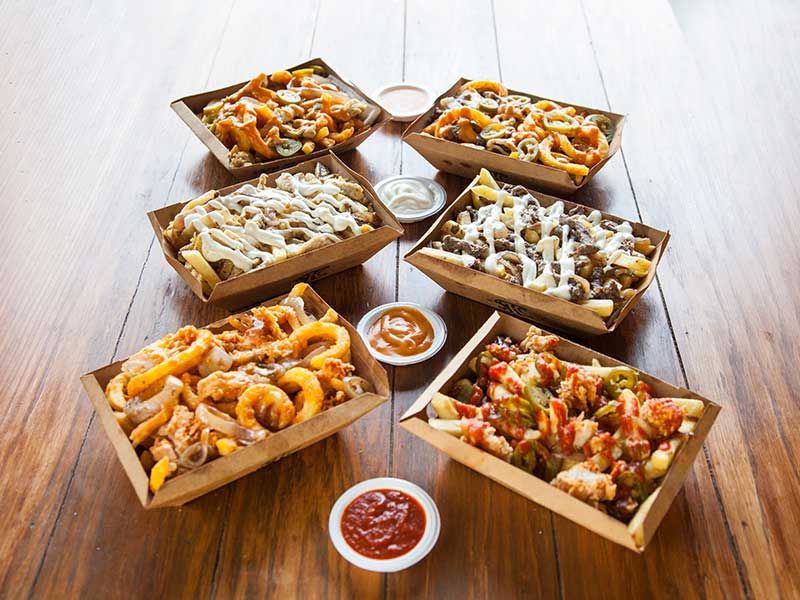
The name “French fries” is a misnomer, as it’s still debatable whether the dish did originate from France or not. One theory states that American soldiers spotted fries in Belgium during WWI, and since most Belgians spoke French, the snack was called “French fries”. (1)
However, some other theories speculate that French fries were actually from Spain (the first Western country to discover potatoes – a New World crop) or even France itself. So, in essence, French fries’ real name should be “probably-French” fries.
Anyway, fries are deep-fried potatoes that can be cut into different shapes, but the most popular one is a thin strip. The ideal texture for fries should be crispy on the outside while soft and tender on the inside.
They can be eaten alone as a snack along with seasonings like ketchup, mayonnaise, chili, or vinegar, depending on the country (2). They also pair well with dishes like burgers, poutine, or milkshake.
Let’s discover the history of French fries and how they became a part of American food culture.
Criteria For Choosing Potatoes For Frying
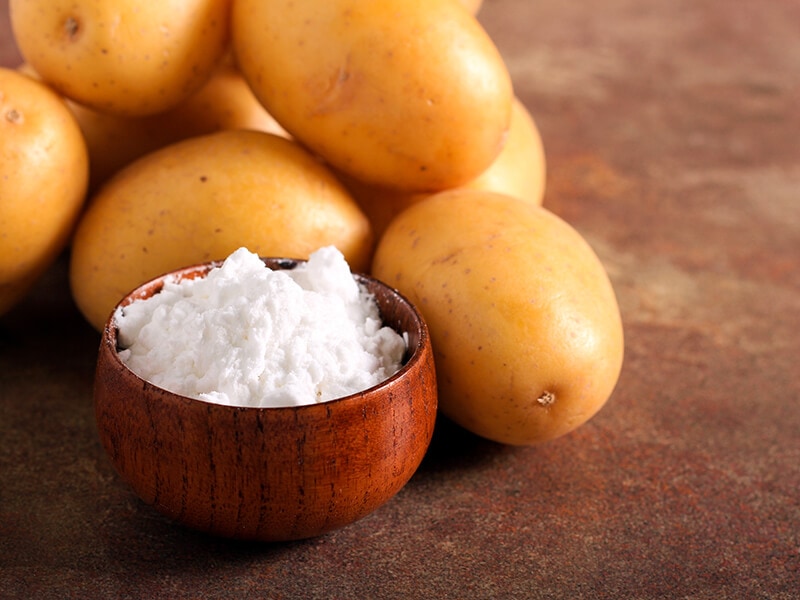
To make good fries, choosing the correct type of potatoes is a must. And there’s more to consider in buying potatoes than you think! Here are some key criteria you have to take into account while buying this type of starchy vegetable.
- Size: As you have to cut potatoes into strips, large potatoes are easier to work with.
- Quality: You can tell if a potato is suitable for frying or not by looking at its appearance. A good potato should have smooth skin and feel firm to the touch. Those with sprouts or green skin are a no-go. You’ll probably get sick if you try to eat them.
- Starch-to-water ratio: Generally, potatoes with higher starch contents and low water contents are crispier after frying, don’t have a hollow inside, and give the snack an appetizing golden brown look.
- Texture: Good potatoes for fries tend to have a flour-fluffy texture, which gives fries their signature crispiness.
- Availability: You also have to take into account different varieties’ availability in each country. Some of the potato varieties are popular in the US, while others are popular in Europe or other continents.
Other Factors That Affect The Crispiness Of The Fries
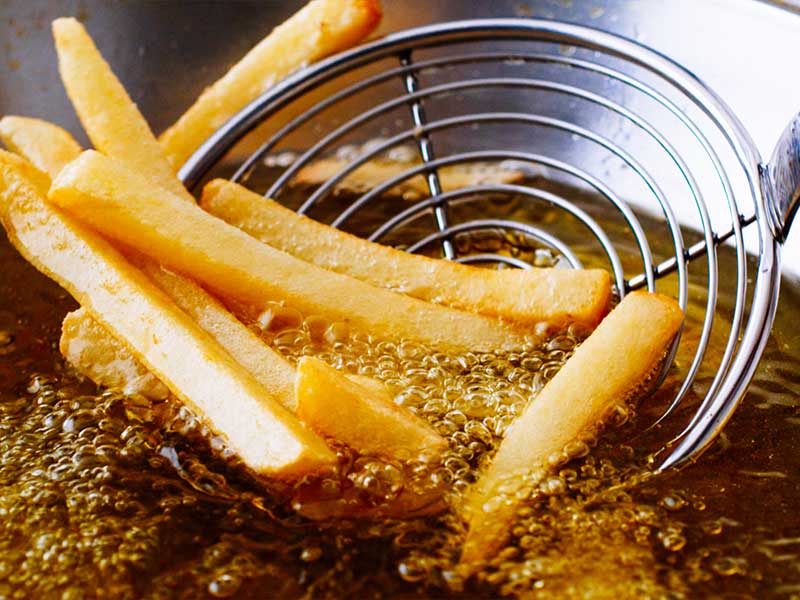
While picking the right potatoes is important, it’s not the sole factor deciding if your fries turn out nicely or not. Pay attention to the following things to elevate the quality of your fries to the next level.
● Type of frying oil: The type of oil used to fry strongly also affects the flavor and texture of the fries.
Pick an oil that has a high smoking point to give your fries extra crispiness. Besides, options with low smoking points (for example, walnut oil and unrefined sesame oil) may break down into harmful substances when you use them for deep-frying.
The best types of oil to use for frying are refined peanut oil, canola oil, and safflower oil. These oils have the highest smoking points, which does wonders for your fries’ crispiness.
You should also steer clear of oils with strong flavors, like extra virgin olive oil, as your fries will end up tasting like the oil’s flavor at the end of the process (they are pricey, too). Use oil with a neutral flavor like peanut oil, vegetable oil, or canola oil.
● Age of frying oil: Ever wondered why restaurant fries tend to be much crispier than your homemade fries? The secret lies in the oil.
Here’s a fun fact for you: When it comes to making fries, used oil works better than newer oil. This is because the hydrophobic molecules in the oil have broken down previously, enabling it to fry the potato more effectively and thoroughly.
Restaurants take advantage of this fact and make the most out of used oil. So when you hear the news that some restaurants reuse cooking oil to make fries for you, don’t freak out! It’s just the better way to do it.
You can also use old oil while making fries at home too. However, keep in mind the fact that after 3 – 5 times of being reused, old oil stops adding to the deliciousness and veers straight into the “unhealthy” territory instead.
Also, to protect your cardiovascular system and still have good fries to eat, you should make sure that one-fifth of the oil used for frying is new oil each time. In addition, don’t keep the oil for too long: get rid of the whole batch after about a week.
● Double frying: Double-cooked fries tend to taste better than those cooked only once. By re-frying, you give them extra crispiness and a more pleasant texture to eat.
● The freshness of potatoes: Another surprise for you: dried and frozen potatoes fry better than fresh ones.
This is because the sugar in potatoes turns into starch due to the loss of moisture or freezing process, which lends even more crispness to the dish after frying.
Categories Of Potatoes You Should Know About
There are thousands of potato varieties out in the world, and it would be impossible to compare them thoroughly. However, based on the starch-to-water ratio, potatoes can be divided into 3 groups.
This useful guide will tell you everything about the differences between the main types of potatoes.
Starchy Potatoes
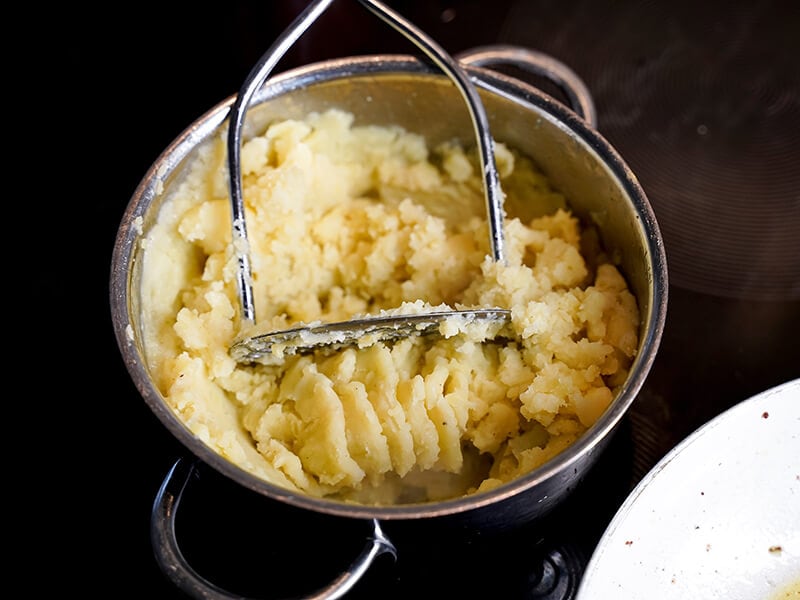
In terms of appearance, starchy potatoes tend to have a longer shape and less smooth skin than other types of potatoes.
As the name suggests, these potatoes have a high starch content and low water content. Naturally, the high starch content means that the potatoes have a fluffy texture, can break down easily, and absorb water well.
These characteristics make starchy potatoes the perfect candidates for dishes that require grinding, mashing, or making crispy snacks. However, they won’t work well with foods that involve roasting, boiling, or cutting because of their soft texture.
This type of potato is often used in dishes like mashed potato cakes, gnocchi, or hash browns. Some of the varieties that belong in the starchy potatoes category are Russet, King Edward, or sweet potatoes.
Waxy Potatoes
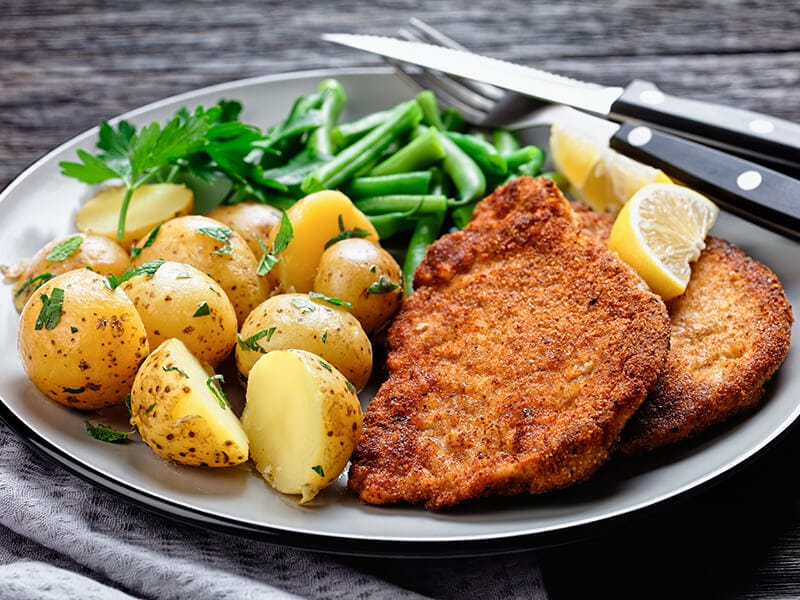
As the name probably suggests, waxy potatoes have waxy skin, and they are the antithesis of starchy potatoes. This type of potato has high water content and low starch content. This creates a firm but still creamy and moist texture for the flesh.
Waxy potatoes are usually smaller and rounder than their starchy counterparts. They also tend to be firmer and have thin skin.
These potatoes can keep their shape even after cooking, so they tend to be used in dishes that require boiling, cutting, or roasting. On the other hand, they are not great in dishes like, say, mashed potatoes, as they don’t break down easily.
Some of the popular names in the waxy potato family are Pink Eye, Nicola, Dutch cream potatoes, etc.
All-Purpose Potatoes
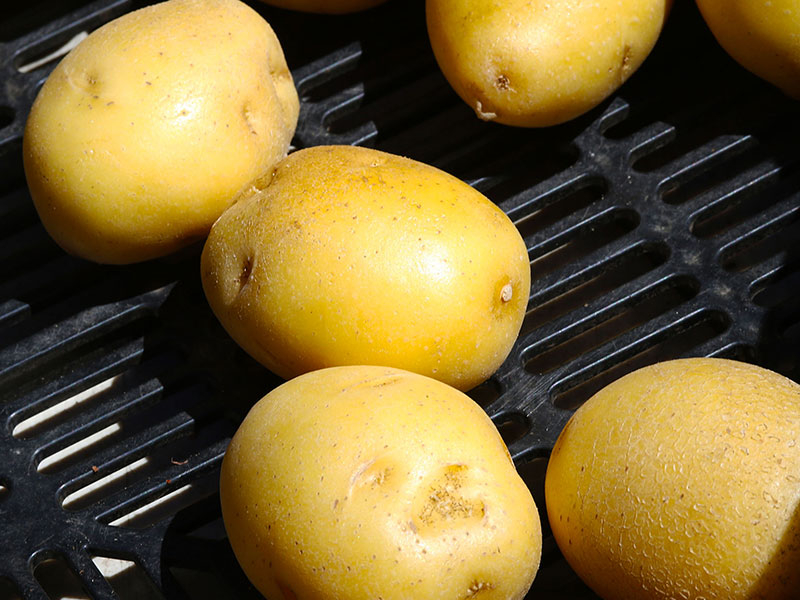
All-purpose potatoes, or floury potatoes, are a blend of the other two types. They have a balanced starch-to-water ratio, which makes them a viable option for pretty much any type of dish.
They tend to be round-shaped and white or yellow. The balanced ratio between starch to water means that they can hold their shape better than starchy potatoes and absorb water better than waxy ones.
Even though they are far from the best possible options, they can be used as an alternative to starchy and waxy potatoes in any dish. Yukon Gold, white potatoes, and purple potatoes are the most popular types in this category.
Best Kinds Of Potatoes For Fries
Now that you have learned the key information to navigate the world of potatoes, let’s answer the main question: What kind of potatoes should you use to make fries?
The answer is the Russet variety. Yes, there you have it. But there are also several good alternatives if you can’t find Russet potatoes anywhere.
In the next part, I’m going to describe some signature characteristics of the Russet potato, as well as its potential replacements.
1. Russet Potatoes
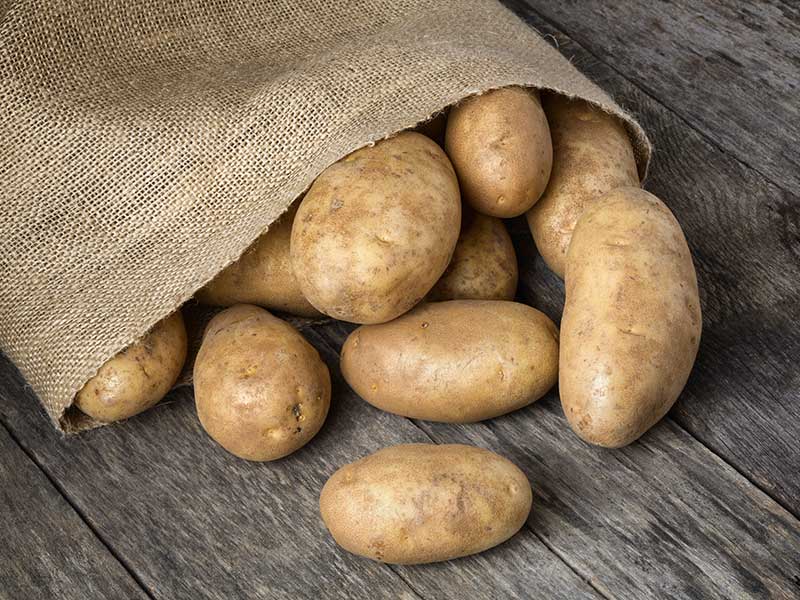
Russet potato, otherwise known as the Idaho potato, is a type of starchy potato. Its size ranges from medium to large, and its skin is a dark brown color.
One special characteristic of the Russet potato is that its fairly sweet and meaty flesh enables more flavor versatility for fries. It has over 40 varieties (3), but the most suitable type to make fries is the Russet Burbank type.
With a high starch content, its meat is quite dry and has a white color. Thanks to its long shape, the potato is perfect to be chopped into thin strips and fried. Russet potatoes also have a high count of antioxidants, minerals, vitamins, and fiber.
They are widely popular in the US. You can buy them from your local grocery stores or order online from Amazon, Walmart, etc.
In terms of Russet potato substitutes, you can also go for other types of starchy potatoes. Some of the good options are Gold Rush potatoes or Jewel sweet potatoes.
2. Maris Piper Potatoes
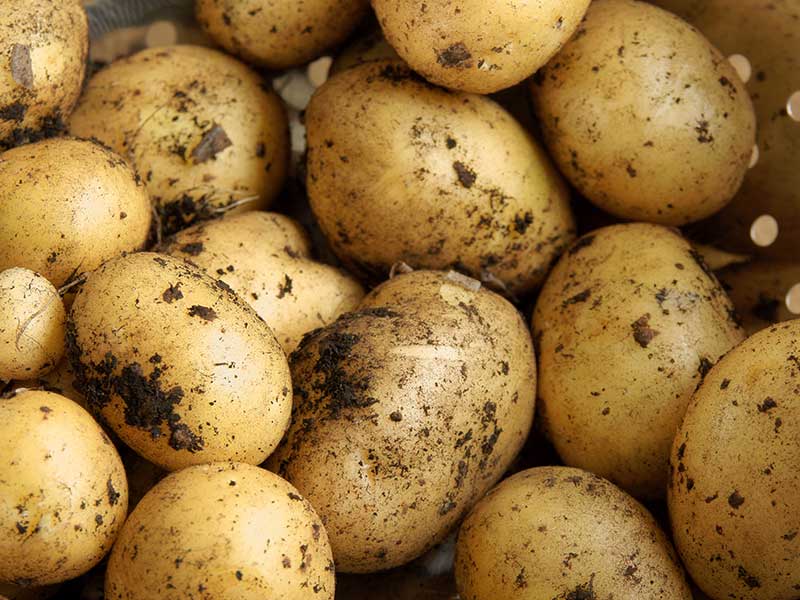
Maris Piper potato is a close contender for the “Best type of potato for fries” title. While being extremely popular in the UK, it is not so popular in the US due to shipping restrictions on its seeds.
Arguably, Maris Piper is even richer in starch content than the Russet potato. As you have learned from previous parts, the starchier a potato is, the crispier it will be after frying.
This type of potato’s size ranges from small to medium, and it has a long, oval shape. Its skin is golden and smooth, with small eyes scattering throughout. It is rich in fiber, potassium, and vitamin C.
The fluffy texture and creamy flesh of Maris Piper potatoes make them perfect for chipping, roasting, baking, and, of course, making fries. This type is considered the “all-rounder” potato, as it can be used in a wide variety of dishes. (4)
3. King Edward Potatoes
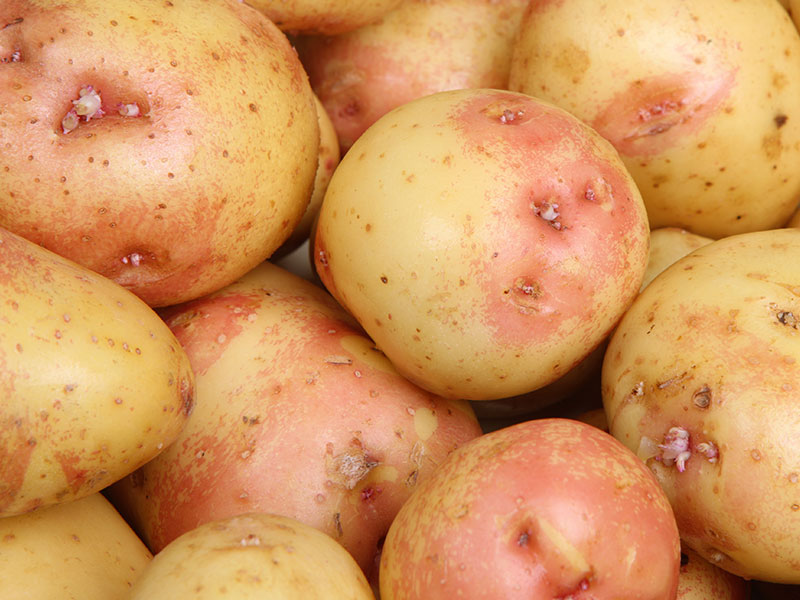
If you can’t find a Russet or Maris Piper potato, there are also other options you can look for, one of which is the King Edward potato. This variety has been cultivated continuously since the early 1900s.
King Edward potato is, predictably, named after King Edward VII to honor him. It has a medium to large size and a round to oval shape. Its skin is quite distinct: yellow to brown with notes of pink blushes on the surface.
It is rich in vitamin C and B6, potassium, folates, and fiber. It is best used for roasting, but chipping, baking, or frying also works well with this type of potato. Its exceptionally light, fluffy texture makes it the perfect ingredient for not only fries but also other dishes. (5)
How To Make Fries At Home
Now that you’ve chosen the best potatoes for your fries, the natural next step is to make fries. Find out how to make the best fries you’ve ever tasted in the next part.
How To Cut Potatoes
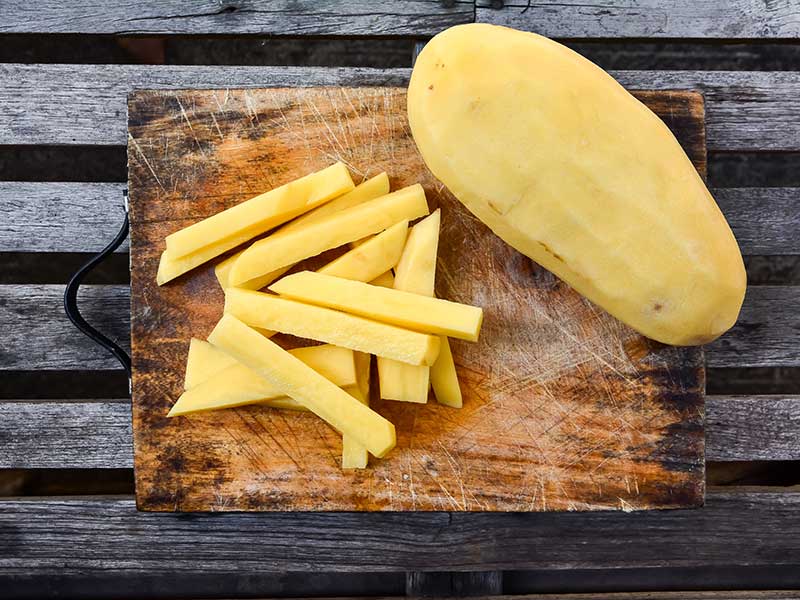
The first thing to do when you make fries is, of course, to cut and peel potatoes. For people who might struggle with cutting fries correctly, follow these simple steps:
- Step 1: Wash the potato to remove the dirt from the skin.
- Step 2: Peel potato. You can do this using a knife or a peeler.
- Step 3: Once the skin has been removed, start cutting the potatoes. Start by slicing along the length of the potato to create slices as thick as you want your fries to be.
- Step 4: Lay them flat on the cutting board, and repeat the process to cut the pieces into thin strips.
- Step 5: Soak the strips in water and let them sit for about 20 – 35 minutes.
- Step 6: Grab a paper towel to dry potato strips to prevent water from dripping in oil and creating a spectacular mess.
Even if you don’t have much experience with a knife, you can follow these instructions easily.
Making Fries With A Frying Pan/ Saucepan
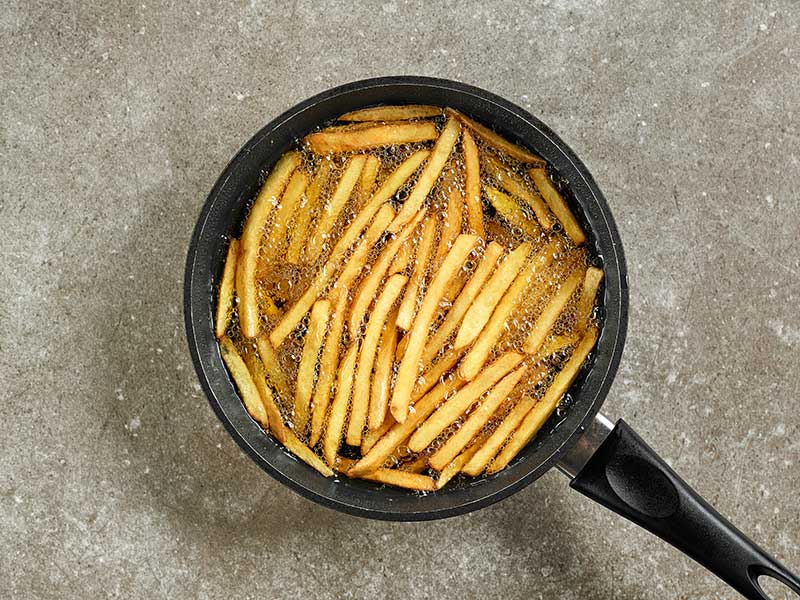
This is the most common and classic way of making fries. It requires only the most basic appliances that every kitchen has, so you can proceed with ease. This guide will show you how to make double-fried fries the traditional way. Here are the steps you have to follow:
- Step 1: Preheat the oil. The oil should reach about 350°F when you start frying.
- Step 2: Drop the potato strips into the oil and wait for them to turn crispy and golden brown. Remember not to overcrowd the pan so that each strip has enough space to be cooked properly in the oil.
- Step 3: After 5 – 6 minutes, use a slotted spoon or a mesh strainer to take the fries out.
- Step 4: Place the fried potato on a paper towel to drip off the oil
- Step 5: Wait for the oil to dry, then put the fries in the pan and fry again for 2 – 3 minutes or until as crispy as you like.
- Step 6: Take out the fries and sprinkle them with seasonings of your liking (salt, chili, cheese, etc.) Serve immediately.
This is how you make the best fries in the world the old-fashioned way.
Making Fries With An Air Fryer
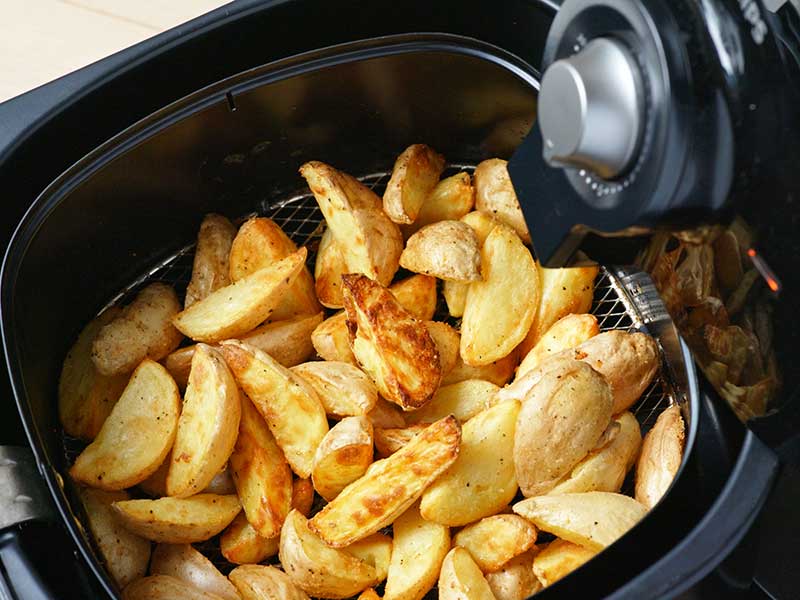
The air fryer is the new star of modern kitchens, especially among health enthusiasts. And that’s easy to understand, as the machine is both easy to use and removes oil out of the equation – which is a perk for many people, as less oil used means healthier foods.
But how can you use it to make fries, a snack where oil plays a key role? Let’s read and find out!
- Step 1: Soak the potato strips in olive oil and roll them through your preferred seasoning. Shake a few times for an even coating.
- Step 2: Preheat the air fryer to 350°F.
- Step 3: Put the potato strips in a single layer in the basket. For air frying, you will need to fry one batch at a time.
- Step 4: Fry for about 12 – 15 minutes.
- Step 5: When the batch is done, put all the fries back into the air fryer for about 2 – 3 minutes to heat up in case they’ve gotten cold. (Optional). Serve immediately with your favorite dips.
This recipe for air-fried fries is simply magic. Check it now!
FAQs
Now I know you may still have a lot of questions regarding this topic – and that’s fine! I am here to answer all the questions you have about potatoes and fries.
Are You Confident In Making Fries Now?
That’s pretty much all you need to know about fries and how to pick the right potato for it. As I’ve said before, when you pick the right kind of potato, you’ve already won half the battle. So be confident the next time you make fries, and everything will be alright.
If you have a friend who has unfortunately ruined a batch of fries before, share this article with them! And remember to comment and share what you think of the information in this post with other people in love with fries.
References
- Rupp, R. (2021) Are French fries truly French?, Culture. National Geographic.
- French fries. Encyclopædia Britannica, inc.
- Russet potato (2022) Wikipedia. Wikimedia Foundation.
- Maris Piper (2022) Wikipedia. Wikimedia Foundation.
- King Edward Potato (2022) Wikipedia. Wikimedia Foundation.

